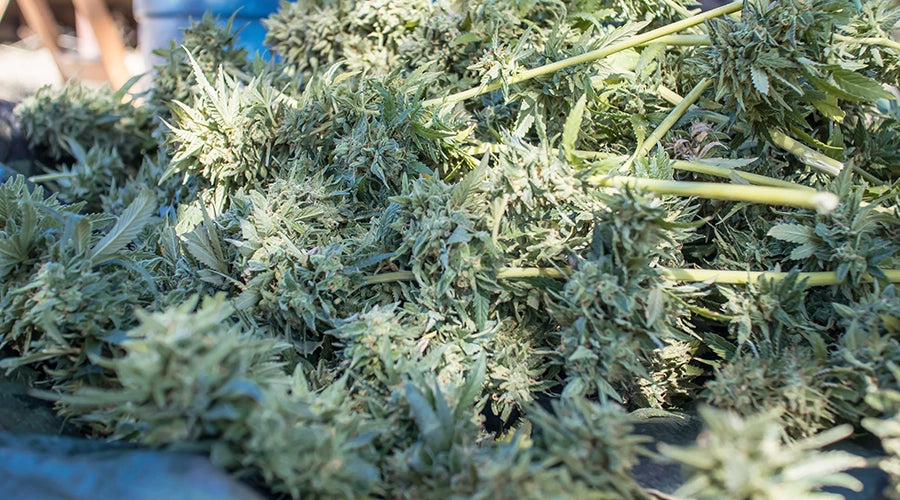
The Perfect Timing for Harvesting Your Cannabis Plants
When to Harvest Cannabis?
Harvesting cannabis at the right time is crucial for ensuring that the plants yield the highest quality buds. It is a process that involves determining the ideal time to cut down the plants based on various factors such as the trichome development, maturity of the buds, and overall plant health.
The maturity of cannabis buds is indicated by the presence of small trichomes, crystal-like structures that cover the buds. Trichomes contain most of the plant's THC, CBD, and other cannabinoids, as well as terpenes, which are responsible for the plant's aroma and flavor. To determine the maturity of the buds, growers usually inspect the trichomes using a magnifying glass.
When the trichomes have turned from clear to milky white, it indicates that the buds have reached maturity and are ready to be harvested. Harvesting at this stage will provide the highest levels of THC, CBD, and other cannabinoids. On the other hand, if the trichomes have turned amber, it means that the plant is overripe, and the potency of the buds will have decreased.
In addition to the trichomes, the maturity of the buds can also be determined by observing the pistils, which are the small, hair-like structures that grow on the buds. When the majority of the pistils have turned from white to brown, it is a sign that the buds have reached maturity.

The health of the Cannabis Plant
The overall health of the plant is also an important factor to consider when determining the ideal time to harvest. If the plant is suffering from stress, disease, or other issues, it may not produce high-quality buds, even if the trichomes and pistils indicate that the plant is mature.
Harvesting cannabis at the right time is essential for ensuring that the plants yield high-quality buds with the maximum potency and aroma. Growers should take into consideration the trichome development, the maturity of the buds, and the overall health of the plant when determining the ideal time to harvest.
After Harvesting the Cannabis Plants
The buds must undergo the curing process. This is a slow, gradual process that helps to improve the flavor, aroma, and overall quality of the buds. The curing process also helps to reduce the levels of moisture in the buds, which can help to prevent the growth of mold and bacteria.
During the curing process, the buds are stored in airtight containers, such as mason jars, for several weeks. The jars should be opened several times a day to allow for air exchange, which helps to prevent the buildup of moisture and the growth of mold and bacteria.
The curing process can last anywhere from several weeks to several months, depending on the desired outcome. Some growers prefer to cure their buds for longer periods of time, as they believe that this leads to a more developed and refined flavor and aroma.
After the curing process is complete, the buds are ready to be trimmed, packaged, and stored. It is important to store the buds in a cool, dry place, such as a dark cupboard or a root cellar, to prevent the buds from drying out and losing potency.
In addition to harvesting and curing, there are several other important considerations for growers to keep in mind. For example, growers should consider the type of nutrients and fertilizers that they use, as well as the growing conditions, such as temperature, humidity, and light.
Harvesting and curing cannabis are critical steps in the cultivation process. By taking the time to carefully harvest and cure their plants, growers can ensure that they are producing high-quality buds with the maximum potency, aroma, and flavor. Additionally, by considering factors such as nutrient use, growing conditions, and storage, growers can help to optimize their yields and produce the best possible results.
Other Factors Affecting Cannabis Cultivation
It's also important for growers to understand the legal regulations and laws surrounding cannabis cultivation, as these vary greatly depending on the location. In some states and countries, cannabis cultivation is illegal, while in others, it is only allowed for medicinal purposes or with a special license.
In jurisdictions where cannabis cultivation is legal, growers may still face restrictions on the number of plants they can grow and the methods they can use to grow them. For example, some states may only allow indoor cultivation, while others may allow both indoor and outdoor cultivation.
In addition to legal restrictions, growers must also be mindful of environmental considerations when growing cannabis. Growing cannabis can be energy-intensive, as it requires a significant amount of light and heat to provide optimal growing conditions for the plants. As such, it's important for growers to consider the environmental impact of their growing practices and to look for ways to reduce their carbon footprint.
In conclusion, harvesting, curing, and growing cannabis involves a wide range of considerations, including legal regulations, environmental impact, and strain selection. By staying informed and knowledgeable about these factors, growers can ensure that they are producing high-quality buds that meet their specific needs and requirements.
